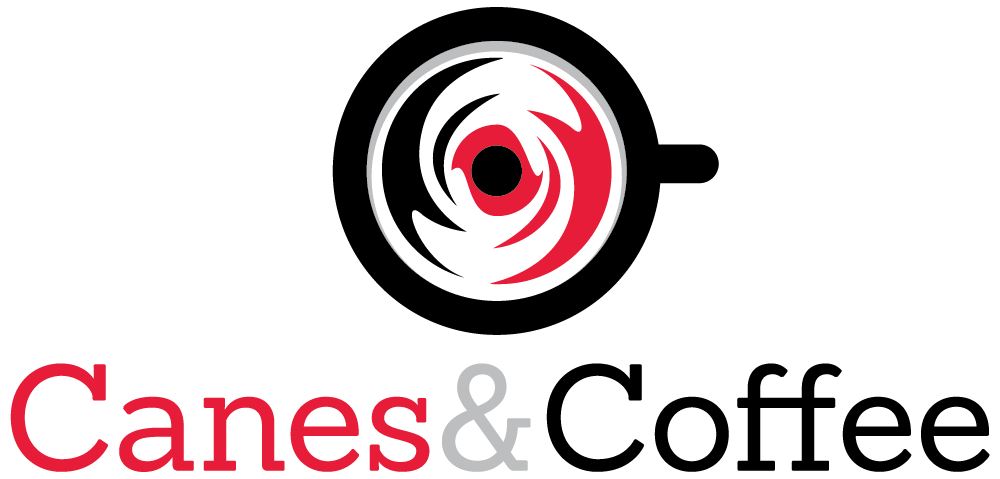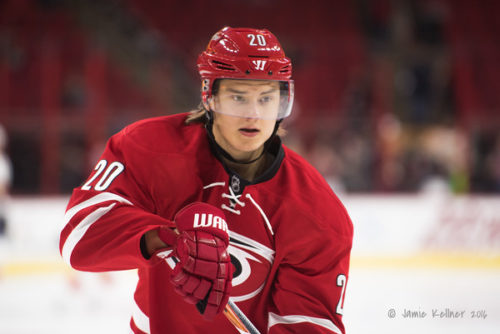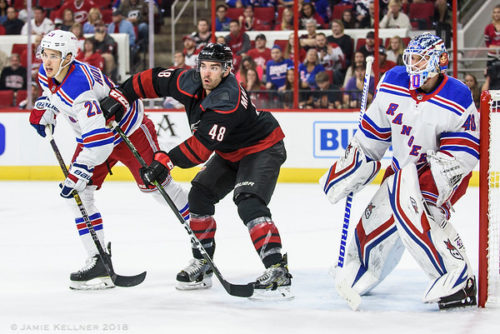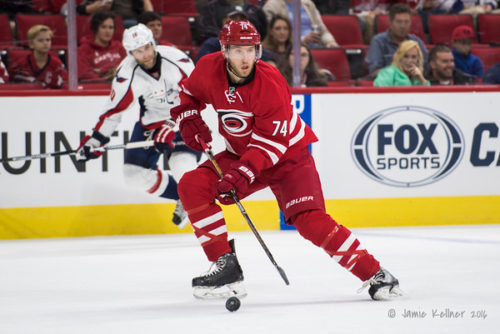After seven games waiting and watching, an injury to Nino Niederreiter finally opened the door for Seth Jarvis to make his NHL debut.
Jarvis had a strong first game overall and was very active offensively, especially when considering that he logged only 10:01 of ice time. In his ten minutes of ice time, he set up line mate Steven Lorentz for two good chances off the rush. He nearly had a follow up/rebound goal when he shot into a seemingly open net only to hit a defenseman’s leg. And he did finally get on the scoresheet collecting an assist on Brett Pesce’s power play game-winner.
Initial assessment based on first NHL game
In short, the offensive ability is there, and Jarvis definitely projects to be an NHLer.
In terms of areas for improvement/growth, he twice entered the offensive zone one-on-one only to have a defenseman with support step up, move him and take the puck cleanly. He reminded me a bit of v1.0 of Sebastian Aho in his rookie year. Aho, who was also playing wing at the time, had a go-to move where he pushed to the offensive blue line with speed to back up the defender just a bit and then immediately pulled up or twirled inside the blue line to assess and look to pass to an oncoming teammate filling the middle lane. Jarvis will need to add some combination of just being stronger on the puck and better able to protect it in the NHL where gaps will be much tighter. There is also some amount of just getting comfortable playing in crowded spaces. Aho adjusted very well in this regard, and one can easily see Jarvis doing the same.
Jarvis also still looks a bit lost defensively at times. In this sense, he reminds me a bit of Martin Necas who has made strides but is still developing in this regard. When Jarvis is F1 with usual responsibility to just pressure the puck, he gets those basics and also figures out quickly when he is second in and needs to take away or challenge an obvious passing lane. But in situations where he is behind the play in more of a read/react situation, he tends to float and/or cover general areas. Just like with the first room for improvement, the hockey sense is there, so it is reasonable to expect that he will make progress here too.
So does he stay?
Most people start a conversation about whether he will stay at the NHL level or eventually depart for juniors by commenting on whether he is good enough. In the reality of today’s salary cap NHL and with a Hurricanes team that has Cup aspirations, that actually has very little to do with the decision. It comes down to two things.
First and foremost, can he significantly improve the 2021-22 Carolina Hurricanes? The key word here is ‘significantly’. In a salary cap NHL, there is a huge financial incentive to return him to juniors. If the Canes do that before he plays ten games at the NHL level, his three-year entry level contract will roll forward another year giving the Hurricanes three more years at a dirt cheap $894,167 per year. Having Jarvis on the roster for that price a year or two stronger, better, etc. can be a huge benefit in trying to build a Cup-capable team in the next couple years without a ton of budget to add top-end players. Because of that, it just makes too much sense to push the start of Jarvis’ entry-level contract back another year if he is not a significant upgrade to the lineup. So the question is not if he is good enough of within the 12 best forwards. The question is whether the 2021-22 version of Jarvis makes the team significantly better than other options.
Second is Jarvis’ development. The downside of the NHL rules is that if Jarvis is not kept at the NHL level, he must be returned to his Canadian junior team and is not eligible to step up to the next level to face stiffer competition in the AHL. No doubt Jarvis has mastered the junior level and will not get a ton of benefit from another full season on that level, and that is exactly why the Hurricanes kept him at the NHL level even though he was out of the lineup initially. But that said, in almost all cases saving a year of the entry-level contract will trump the development preference except in the case where a player shows that he can be a significant upgrade to the roster. Put more directly, winning a Stanley Cup generally trumps all else, so if Jarvis can use his audition to suggest that he gives the Canes a significantly better chance to win it all, the team would trade the entry-level contract slide for that.
So how does it end?
I am on record even before the regular season started as saying that Seth Jarvis would in fact make the opening day roster but that his stay would be limited to the nine-game maximum before burning the first year of his entry-level contract and that ultimately he was destined to be returned to juniors.
Right now, I stand by that prediction. But, with Nino Niederreiter now out of the lineup for awhile, Jarvis has the opportunity to make a case for being the roster/Cup chances upgrade required to stay. In the case of great players, there are cases of gradual development/progress, but equally common is young stars just seizing an opportunity given to them. That is exactly how Eric Staal stuck at the NHL level in his first season. He led the NHL preseason scoring and just looked like a player who was ready for the NHL now not later. Could Jarvis be the next to just seize the opportunity and make it impossible to send him back to juniors? That will be one of the fun Canes story lines to watch over the next couple weeks.
What say you Canes fans?
1) What was your first impression of Seth Jarvis in regular season NHL action?
2) If you were the Canes management, how would you prioritize/balance the benefit of sliding Jarvis’ entry-level contract forward another year versus what is best for his development versus what is best for the 2021-22 Hurricanes?
3) How do you think it ends? Just Seth Jarvis rise up, seize his opportunity and make it impossible to return him to juniors? Or does he make a favorable impression but still ultimately spend depart?
Go Canes!




I haven’t seen a Canes game this season so I can’t answer 1. But I thin you answered 2 and 3 when you wrote he is not strong on the puck and looks a little lost defensively. With the financials you correctly describe he is not at the level yet to warrant staying up here.
The situation reminds me a lot of Necas. The business side always trumps “is he ready”, and the ELC slide is a weapon for future strength. If Jarvis is a good value now, he will be a better value next year.
As Rod said about Necas back then, playing 8 minutes a night on the fourth line grinding wasn’t the right fit for Necas development. Lots of minutes on the top line at a lower level is better development for the role he will ultimately fill.
I must be watching different players. From what I’ve seen Jarvis is already better defensively than Necas. He has made the fourth line an even bigger threat. I would love to see him get some shifts in the top 6.
I will go on record that Jarvis stays.
I agree with <, I think he stays. He is already learning and scored this evening. We could have others go down when Nino comes back. You put Jarvy in and off and running again. Burning a year, but he’s clearly NHL level already (young and some mistakes and strength to gain yet, but ready). I would not be surprised that he stays. Going back to juniors does nothing.
Having taken a look at the Wolves’ player stats, I think he goes. We have a player there tearing it, winning player of the week and player of the month awards. Poturalski has already scored 14 points in just 6 games. I would make the argument that Poturalski – who led the AHL in goals last season – is finally ready for the bigs and that business will trump play for Jarvis with Poturalski being the natural call-up from Chi-town with future Canes injuries.